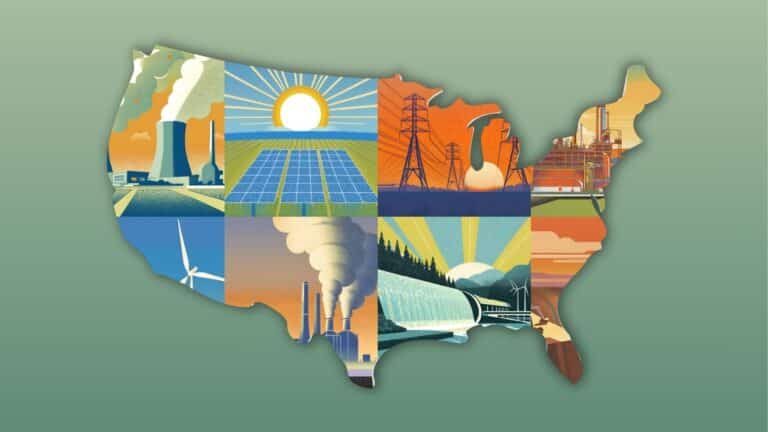Power prices are expected to soar under new tax cut and spending law
In states without policies to drive renewable energy, power prices could surge as federal tax incentives for clean energy disappear, according to Energy Innovation, a think tank.
Current Access Level “I” – ID Only: CUID holders, alumni, and approved guests only
Senior Fellow and Managing Director, Geopolitics of Climate Change and the Energy Transition
Kate Guy: You see governments saying we need secure energy, we need more energy, we need affordable energy, we need reliable energy. And the climate changes that we’re seeing, the increased demand that comes from more severe heat is itself having a loop effect back on that energy security. And I think the countries or societies or local areas that fare better are really just the ones that are building resilience into their systems now. And that’s resilience to the fast pace of change that we’re seeing, not to what resilience was five years ago, but to what the shocks are going to look like 10, 15, 20 years from now.
Bill Loveless: Many parts of the US have experienced brutal deadly heat in recent weeks, and there’s plenty of summer left. And of course we’ve all watched in horror as flash floods ravaged communities along the Guadalupe River in Texas. Beyond the immediate human toll, these weather events expose critical vulnerabilities in our energy infrastructure. Power grids are seeing tremendous demand from air conditioning, and of course, extreme weather threats go well beyond power outages. They damage transmission lines and cascade across other critical infrastructure like water systems and healthcare facilities. The question isn’t whether climate change is reshaping energy security, it’s how quickly we can adapt. As traditional definitions of national security expand to include climate threats, what will it take to build truly resilient energy systems?
This is Columbia Energy Exchange, a weekly podcast from the Center on Global Energy Policy at Columbia University. I’m Bill Loveless. Today on the show, Kate Guy.
Kate is a senior fellow and managing director of the geopolitics of Climate Change and the energy transition at the Center on Global Energy Policy at Columbia University. She previously directed the State Department’s diplomatic efforts at the intersection of climate change, national security and foreign policy for the Biden administration, serving as senior advisor to John Kerry, the special presidential envoy for climate. Before joining the Biden administration, Kate was at the Center for Climate and Security where she chaired the national security military and intelligence panel on climate change. I spoke with Kate about how extreme summer events are redefining energy security, their destabilizing impacts on critical infrastructure and defense systems, and whether our resilience efforts can match the scale and pace of both current and longer-term climate challenges. Here’s our conversation.
Kate Guy, welcome to Columbia Energy Exchange.
Kate Guy: Thank you so much, Bill. Really happy to be on the show.
Bill Loveless: Yeah, it’s a timely time to talk about this topic of extreme weather and its impacts, certainly with the tragedy we’ve seen in the Texas Hill Country in recent days. And even as we speak, I’m noting that this morning they’re calling for heavy rains headed toward the East Coast from the DC area where you are to southern New England where I am, with a high risk of some serious flooding. So it just seems to keep coming. It’s that time of year, but events seem to take place throughout the year. But in your work in government and in the private sector, you’ve focused on the intersection of climate change, national security, and foreign policy. You continue to do so at the Center on Global Energy Policy. What has inspired you to work on this combination of topics?
Kate Guy: Yeah, well thanks Bill. And you’re right. I think when we first started talking about doing an episode on this issue, it was a few weeks ago when there was a severe, severe heat wave striking all the eastern half of North America. And we were sort of talking about the impacts of that crisis and what that looked like. And just in the two weeks since then, we’ve had yet another catastrophic event hit this country with just horrific loss of life, and as you say, more coming. Hurricane season hasn’t really even kicked off. Wildfire season has started but hasn’t been to the real heat of it yet. So it does seem like waves that just keep coming and keep hitting the beach and getting bigger and bigger in the summer as well, but year round. So it’s an important topic for us to discuss and even more important for folks to start planning for.
As far as myself, I have always spent most of my career working on international climate policy, but from the lens of not just how do we solve this problem—of which there are many fantastic people working on—but also what are the implications if we don’t? And what are the implications at each sort of step in the curve of warming? What does that look like for our societies, for our democracies, for international order? And then as you say, for our national security, because you can’t have this big of an impact on the world or on the stable foundation that we have known the world for the past many hundreds of years … you can’t have that big of a shock to that system without having big downstream impacts on what protects us and what keeps us safe. So I’ve always just found that nexus of issues fascinating and critically important for what I think will define the nature of politics and international relations going forward for the rest of the century at the very least.
Bill Loveless: Yeah, and as we’re discussing, the episodes just keep coming. The world’s experiencing another summer of extreme heat. Some headlines tell the story. Among them: “Early season heat dome brings highest temperatures in years to parts of the Eastern US.” Another one reads, “Health alerts come into force as third UK summer heatwave builds,” and another one, “Eastern China swelters under early heatwave threatening crops and industry.” Does the growing intensity of extreme summer weather events reshape traditional definitions of national energy security?
Kate Guy: Oh, absolutely. I mean, look—those three headlines alone show the historic nature of this in three regions of the world, normally very different, right? In terms of their power and their energy outlook, many of them—US, China, Europe—lots of competitors traditionally within those blocks. And yet what unites them right now, what unites so many parts of the globe right now is that we’re dealing in the unprecedented in terms of the weather that we’re facing, the trend lines that we’re seeing, and just what all of our populations and economies have to deal with. And yes, our energy security, which is increasingly for each of those regions, but for much of the world, on the top priority list for governments, even more so I think than any time in recent memory.
To me, you see governments saying we need secure energy, we need more energy, we need affordable energy, we need reliable energy. Our economy depends on it. Our competitiveness depends on it. And what you’re pointing out is that the climate changes that we’re seeing, the shocks, the extreme weather, the increased demand that comes from more severe heat is itself having a loop effect back on that energy security. And I think we’ll talk more about that throughout this conversation, but no part of the world is really immune to these changes. There was some truism a few years ago that there’ll be winners and losers to this fight and some countries will fare better than others, and potentially that’s true. But I think what strikes me in my work is there’s kind of only losers and worse losers when it comes to these impacts. And the ones who fare better, the countries or societies or local areas that fare better, are really just the ones that are building resilience into their systems now. And that’s resilience to the fast pace of change that we’re seeing, not to what resilience was five years ago, but to what the shocks are going to look like 10, 15, 20 years from now.
Bill Loveless: Is energy security now inseparable from climate security?
Kate Guy: That’s a great question, Bill, and I think it’s the crucial question for us all to wrestle with because too often we are presenting these concepts as a battle among each other—of energy security versus climate security—that you have to pick one and either ensure that reliability of supply of energy or chase after emissions reductions to ensure safety for the population there. But you can’t do both. And I think what we are increasingly seeing is it is a negative spiral among these two types of security. That extreme weather is fueled by climate change, which is fueled by emissions from fossil fuels, but that is producing extreme stress on our energy system that you cannot ensure security when you have the relentless pace of disruptions to the energy infrastructure that we’re seeing.
And this has implications all across the energy system. Just last year here in the United States, hydropower generation was down 13% due to drought conditions, and that’s now in 2024. That pales in comparison to the drought that’s projected across this country into the future, especially in the Pacific Northwest where a lot of that hydropower generation is. At the same time, you’re seeing energy demand spike because of air conditioning needs. Right now, air conditioning accounts for about 20% of energy use in Americans’ homes. That number is already rising quickly and set to rise even more dramatically as places that didn’t need air conditioning historically increasingly need it, or places that didn’t need to run it very often could get by with a ceiling fan. Increasingly that’s not healthy for those communities. Or you’re seeing huge population influx into areas that are really reliant on air conditioning in the summer, and that’s becoming even more punishing.
So the unfortunate thing is the sort of resilience measures that are necessary to prevent against climate change are themselves really energy intensive or require huge new build-out of energy. So energy security, yes, but if it’s not secure, if that infrastructure is not resilient to climate change, and at the same time those shocks and disruptions and severe weather are only getting worse the longer we take to decarbonize, so it’s not a battle. It’s almost like a mutually assured destruction between the two concepts of energy and climate security if you really look at it.
Bill Loveless: Yeah. On a recent episode of this podcast, Laura Cozzi, an official with the International Energy Agency, told Jason Bordoff that 20% of the global increase in electricity demand last year was attributable to extreme weather. It just gets at how well grids are prepared for this extreme weather. Now of course, that varies significantly from one country or one region to the next, but let’s just take the United States or North America, where we’ve seen the North American Electric Reliability Corporation, the nonprofit organization responsible for ensuring the reliability and security of North America’s power system, warned in May that it anticipated potential electricity supply shortfalls in some areas of North America during periods of extreme summer weather, despite adequate resources for normal conditions. And NERC cited rising electricity demand, particularly from new data centers and electrification, coupled with retiring baseload plants and increased reliance on variable renewables as key factors. But the potential for a bigger impact on the grid from really bad weather is what is worrisome to those who operate it. How well are US regional grids prepared to share resources and prevent cascading failures during summer crises?
Kate Guy: Yeah, it is the question, right? And I think it’s one we’ve seen a lot of discussion around in this country because increasing funding for building resilience into this infrastructure, increasing that investment and the building that needs to go into not just building out more power to meet the rising demand, but also looking at the aging infrastructure of the energy grids and suppliers and transmission lines across the country, getting those sort of up to the new reality—that takes a lot of investment. And the question is whether those improvements, that funding, can be sustained across administrations into moments of economic strain/ We’re seeing, not just in this country, around the world, increasing belt-tightening when it comes to public spending. Is the necessary adaptations and resilience that’s needed to go into this infrastructure, is that going to sort of be at the top of the priority list when you’re facing these funding shortfalls? It’s a real question.
And particularly right now in the United States, you have an administration that says energy supply, energy dominance is a top priority. Too often in those conversations, the resilience of existing supply cannot be on the top of the priority list, right? And it is critical in these crunch moments. The moment to plan for resilience is not in the moment of the storm or in the moment of the severe heat wave. It’s many years before that. And the other sort of harsh reality that we’re seeing today is the extreme weather we’re experiencing now this summer, or those headlines you just quoted. Some people might refer to that as the new normal, but the way I like to think of it is it’s really the best we’ll ever experience again, and that’s because all of the trend lines we’re seeing around climate are pointing towards more intense, more frequent, earlier, more severe impacts like the ones we’ve been discussing.
It’s a rapid march into a much more shock-prone future as emissions and temperatures continue to rise, and that is the environment that we need energy authorities and energy consumers and suppliers to be planning for. There are many ways that needs to be done. Some of them are things that any business can kind of take into their own responsibility list—doing the risk assessments that are necessary, keeping those up to date as we see new data flood in terms of how our local communities are changing. We need to establish an environment that rewards energy suppliers for building resilience into their system as the public sector frankly needs to help in that as much as possible by supplying that data and those risk assessments that the federal government is doing. And then I think there’s also a lot that has to happen on the demand side as well, as energy consumers, particularly businesses. Those data centers you speak of, I know, are putting a lot of thought into how they can reduce their need for energy. AI often is a helpful tool in doing that and getting greater efficiency out of the system. Same thing goes for water, switching to some of the next-generation materials or designs that are building climate and extreme weather proofing into the design is really, really critical. So there’s so much that has to happen along the spectrum and really needs durability in terms of our investment and prioritization of that climate proofing.
Bill Loveless: The current administration in the US has declared a national energy emergency, which for the most part emphasizes the need for more fossil fuel production and generation. It doesn’t, as far as I read it, take into consideration some of these issues you’ve raised. Certainly not on the climate side, but also on the resilience side when it comes to responding to severe weather. What’s needed in a national energy policy that adequately takes into consideration the need to address the impacts of extreme weather across the country?
Kate Guy: Yeah, I mean the best thing for resilience in whatever kind of situation you’re talking about is diversity of input. You are resilient if you have many places that you can purchase that widget that you need for your technology from—not just reliant on one. You are more resilient in a shock when you have different places you can go. You’re not just stuck on an island somewhere. The same is true for energy, the energy mix, right? The most resilient place to be is a place where you have lots of different types of energy. You can switch between such that if one goes down, if there is an event that takes out some part of the energy system, you have backup. And that backup hopefully is not just peaker plants, which are themselves, often the oldest, least resilient, most polluting part of the system, though of course they’re crucial in those moments of outage and severe weather and the shocks that we’ve seen over the past few weeks.
So planning a system with that diversity of supply in mind also means planning for a system that can respond to peaks in demand and respond in a way that’s efficient for all. So in my mind, if we really are facing an energy emergency in this country, why wouldn’t you be trying to do everything you can to build out new systems of clean, reliable power to meet the moment? But I digress there. I think the other thing that we really need and really need attention to in this moment is the existing infrastructure that we have, including fossil fuels, is itself at big risk. I’ve spent a lot of my career working on the Arctic and on the climate changes we’re seeing in the Arctic. Much of the infrastructure up there, particularly the permafrost-heavy regions of North America, of Russia, are thawing rapidly, leading to sort of uneven ground and the sort of collapsing of infrastructure. Much of that infrastructure is either defense infrastructure and defense installations in the region, or it is pipelines and energy extraction infrastructure, which are themselves having to increasingly deal with those impacts. So the fossil fuel industry, while the current administration might see more fossil fuel as critically important for the emergency, they’re also facing their own climate impacts that are having disastrous impacts on their operation. So they are not immune from the planning that needs to happen.
Bill Loveless: Yeah. What about current energy emergency plans? From what you have said, I get the impression you feel as though they’re not sufficient in the United States to handle the scale and frequency of today’s extreme summer weather events. Questions like this have come up lately in regard to the tragic flood in Texas, and whether the Trump administration cuts at the Federal Emergency Management Agency, the National Oceanic and Atmospheric Administration, and the National Weather Service may have impeded alerts and recovery efforts there. What critical functions do these agencies perform?
Kate Guy: Well, first I’ll just say, I mean I think it’s not just the Trump administration. I think we are kind of coming to a reckoning in this country that we have not put enough attention, time, prioritization, funding into adaptation and resilience, right? So much of the conversation around climate for the past decades has been on how are we lowering emissions? A critical conversation, and a critical sort of north star for so many of us to have. The problem is that we also need very quickly to be spinning up, especially in a country like the United States where so much of policy is local and localized to the states and counties, spinning up tools and investments to help build resilience to the shocks that we’re seeing, not just to sort of invest in the emissions-lowering investments that we need to see. So yes, the Biden administration made some strides there. I hope that the Trump administration and the Congress recognizes that those are really important to continue, but we need to go far beyond that. We need adaptation and resilience strategies across this country, and that is a sort of basic input, I think, to be able to keep our communities safe going forward into the next few years and decades.
And a really central input to that will be really good forecasts, data, prediction from our weather services. And I have spoken to so many scientists who I really respect, who are frankly terrified about what the current cuts to NOAA, to the National Weather Service, to NASA will mean for the data sets that are increasingly accurately predicting this weather. Once you lose a few years of that data, the predictions will never be as good as they were, especially as you’re seeing each year look a little different than the year that came before that. We need to have really good science fanning out across this country to better understand and better predict what’s coming. The Trump administration has eliminated 600 people from the National Weather Service, and this is not a time when maybe the weather service at one point could have been bloated and there were extra people sitting around that didn’t need to be employed. No, already, national weather offices across the country are facing 40% significant shortages, so you already don’t have the smart folks on hand that you need to accurately handle this situation.
Unfortunately, a lot of the cuts that we’ve also seen as well are eliminating entire laboratories, data streams and data-sharing agreements, partnerships with universities over the country that then take and input that local data into the overall national data sets and really localize that work. And we’ve also seen positions eliminated who are folks who are not just doing the forecasts or the deep scientific work, but whose job it also is to communicate with the public about what that means. I’m not a meteorologist. Sometimes when I see their models, I have no idea what I’m looking at. We need people like you, Bill, whose job it is to communicate and to get out there and say, this is what that means, especially in times of crisis. So not investing in these systems will have a lasting impact, not just on the weather app on our phones, but on the economy, on our critical infrastructure, on the hardworking engineers who need to use those forecasts to sort of plan effectively.
Bill Loveless: Well, some would say there are private weather entities that can step into this role to a greater extent using the latest technology, AI, et cetera. Not sufficient?
Kate Guy: There certainly are, but all of those, most of the folks I’ve spoken to in the private sector, whether you work on commodities futures and forecasting, or you’re in the sort of private weather economy, they rely on data that is free and publicly provided by the United States of America, right? It’s that government science and investment and research that frankly is our strategic edge when it comes to innovation, right? Because you have a government that’s providing that science and that research, you can have a really robust private sector that uses that information and powers the economy. I worry about the United States stepping back from that role, from that data provision role and the basic science role. What does that mean for our competitors abroad, who will fill in and take that new edge? And this does have international impact as well, because we need to be sharing data. We live on a round earth with weather that travels across it. We need to be sharing that data across scientists who live in many other parts of the world to better protect Americans as well. Understanding what happens over both of our oceans is critical for knowing what’s going to happen in the Great Plains, right, a week or two from now, and what crops in the fields will be facing. So having that good, fast, well-funded exchange of science is actually a critical input to this whole conversation.
Bill Loveless: Speaking of science, I’ve spent a fair amount of time lately trying to understand attribution science, the extent to which you can attribute climate change to changing weather patterns in the United States. Great fellow Radley Horton at Columbia University does great work in this field. To what extent is research in this field and then other ones related to extreme weather and climate change keeping pace from what you read, from what you observe?
Kate Guy: Yeah. I think attribution science is one of the most quickly expanding fields of climate research. And similarly, not a climatologist myself and don’t deal in what are really intense models and probabilistic calculations that they make, but that attribution science, being able to really say with some confidence that there was a 5%, 10%, 20% shift in weather patterns because of what we’re seeing. That is science they take very, very seriously, and you will not see a scientist saying this was caused by climate change ever, but if they will say there is a 20%, 50% more likelihood that this event happened because of what we’re seeing globally, that is something to really take seriously because there is a lot of work that’s gone into that attribution.
But even setting attribution science aside, I think most people in the day-to-day life don’t need necessarily, to know the sort of backward-facing look at how much more likely or more intense or more frequent an event they just experienced was because of climate change. Though of course, in the totality of it, it is quite shocking when you look at each of those events individually, but most people, most businesses just need to know, okay, if this is that much more likely each year going into the future, what do we need to do to build to handle that? Right? And I think too often the conversation after an extreme event can boil down into was this climate change or was this not? Was this bad forest management or was this bad emergency systems or bad warnings? Yes, probably all of the above. It’s a multivariate sort of situation. But what we need to understand is by looking at the climate trajectories and looking at the, not just one week ahead weather forecast, but the longer term climate predictions that are coming, how we’re building those systems around that. Frankly, the way I see it, and I’ve spent a lot of time working with the military and other parts of our defense infrastructure on climate change, if you’re not planning according to those climate models, you are not effectively protecting yourself, your investments, or your businesses for the world we know is coming. Right? And why wouldn’t you do that? Why wouldn’t you take any piece of intelligence you can and feed it into your planning purposes to safeguard your work and your investments?
Bill Loveless: Yeah. Speaking of the military, I’m recalling a show we did just about a year ago this time with Sherri Goodman, former Pentagon official and author of the book called “Threat Multiplier: Climate, Military Leadership in the Fight for Global Security.” She writes in that book how combating climate change has become or had become, I should say, central to the Defense Department’s mission. But it appears that’s no longer the case now, or is it?
Kate Guy: Well, first of all, I’m so glad you mentioned Sherri. She is frankly the mother and leader of this field of looking at the intersection of these issues and has done so much for me in my career. And it’s a great book. I encourage all to read it just for that lay of the land of how these different sectors really intersect. And you’re right, I think what we saw over the past few decades was regardless of administration, be they Republican or Democratic here in the United States, the military and the intelligence community increasingly seeing climate change and the threat of climate change as central to its work, whether that’s a combatant command in the Pacific or in Africa saying, we need to better understand how this is fueling instability in this region, or this is having impact on our defense installations on an island or on the seacoast somewhere, to our fantastic intelligence services saying, we need to predict what the world looks like 20 years from now, 30 years from now. And you can’t do that without taking into account all of these shocks that we’re seeing.
So that was frankly the consensus across administrations. Some administrations put more emphasis on that than others, but it was the George W. Bush administration that first commissioned work on these intersections and asked for good intelligence to be brought to them to understand these trend lines. We are not necessarily seeing that now. The current Secretary of Defense has said that work on the topic of climate change is a distraction to the military and wants them focused primarily on other issues. That’s fine. I will say if you look into the sort of communication that was put out by the Secretary of Defense calling for a retraction away from work on climate, you’ll see a little postscript at the bottom of that message that says, this does not account for weather or for resilience building activities. This decree should not be seen to take away from the work the military has to do around weather and forecasting and prediction and building resilience. So the way I see it is, okay, maybe we don’t want to say the words climate change, but we need to talk about what’s happening on the battlefield, what’s happening to the resilience of our troops and our installations and so much of our important systems worldwide. You can do that without saying the C word. That’s fine with me as long as you’re accurately looking at the science and looking at what that means to keep our folks safe.
Bill Loveless: That’s interesting. So the concept hasn’t gone away, the idea of paying attention to extreme weather for its impacts on military preparedness?
Kate Guy: No, of course not. And you know why? A lot of this is stuff I can’t talk about openly, but there is a strategic edge to understanding what’s happening in the world. It’s why during the Cold War, we set up a lot of systems to understand atmospheric science and deep sea ocean science and what’s happening in the Arctic and what’s happening in these parts of the world because there are submarines there and there are weapons systems that cross through that environment and detection that needs to happen by looking at really subtle quakes in the Earth’s crust. Earth systems science is not just green tree-hugger stuff, it’s how you get the strategic edge against your competitors, whether that’s in the private sector or in a military sense. So I think the first people who would be glad about the US walking away from understanding the trajectories of earth systems science in the next few years are our competitors, who I will tell you are not stepping away from that and are employing those scientists to help them understand how best to adapt to the changes that are happening in the oceans, in the atmosphere, and on land. And it’s a really critical strategic vulnerability if we walk away from it.
Bill Loveless: What can energy regulators, grid operators, or others or utilities learn from how the defense industry has responded to climate threats, whether those are from increased heat events or other impacts related to climate change?
Kate Guy: It’s a good question, and it’s something that’s quite new, right? Really only in the last few years have the services, the different combatant commands around the world, really taken seriously some of the planning that goes into preparing for a climate change future. So I’ll just tell you some of the things that they did, some that I was a part of, and we can talk about the lessons learned for the energy sector. But the first is really getting smart on the variables of change, of climate changes that are happening. So the Army, for example, built this fantastic climate resilience tool that looked across all of the Army installations in this country and across the world, looked at the water, the heat, the power, the risk from storms, the risk from sea level rise, just about every variable you possibly could. The whiz kids there sort of put that into a model that could predict where is the vulnerability the most intense, right?
And why that is critical is because as we said, we’re all in lands of not enough funds, though Department of Defense seems to always get more than the others, but you need to prioritize where those investments are going and it can be really hard to compare apples and oranges. You’ve got this installation that’s facing these kinds of risks, this one that’s facing these. Which is the more important? And you need to sort of take a scientific modeling approach to that work. And there are fantastic scientists and fantastic firms that do that. And I think that’s something increasingly that any energy business, whether it’s part of transmission or part of extraction or part of another part of the supply, should be looking at: what are the forecasts telling us, not just for where we are now, but for a 1.5-degree world, for a 2-degree world, and what are the stressors that happen in the environment in that time? Be it drought really impacting mining processing and refining or intense sea level rise.
I was, in preparing for this, I saw a pretty terrible stat, let me see if I can find it. That says 80% of the sites of production of energy fuels, minerals and infrastructure are going to see a 10% increase in one-day maximum precipitation events. So just in the next few years, most of the sites that produce our energy fuels, our minerals, are going to see more and more intense precipitation events. Many of those, a third of those in the United States, oil and gas refineries are in coastal areas, low-lying sea level areas. That’s really similar in fact to a lot of our naval infrastructure that’s also on those sea coasts and are facing more and more storm surges, sunny day flooding, impacting operations. So just having that sort of base understanding of where the risk is is the first importance. And at Columbia, at CGEP, we’re going to be doing a lot more work on better describing and getting that risk out to folks so they can understand where they might be vulnerable.
But then to your point about the energy systems, what can you do then to build resilience into the system? And frankly, the first thing I would say is to bring in professionals to help you understand those risks. It’s often not, shall we say, expertise that’s on hand. It’s often folks you need to bring in that have spent their careers working in that sector and admit that you might not have what you need on hand to look at where the sparks in power lines might ignite a wildfire or where the prediction of where energy supply shocks might happen and bring in folks that know that to your business to help you plan for that scenario.
Bill Loveless: Can you give us a good example of where this sort of action has taken place, where you’ve seen it done effectively?
Kate Guy: Yeah. There was a really good example just a few weeks ago around the heatwave that struck the northeast where they had sort of planned ahead and rolled out technology that used the sort of Nest smart home energy operators in everybody’s homes. And in a moment of extreme energy shock, there was a sort of function built in that could across the board sort of pre-cool folks’ homes before they came home from work. I think this was particularly on Long Island, that might be broader than that, but the energy regulator there put out the call to all the Nest devices in these people’s homes to pre-cool around 3, 4 or 5:00 PM to make sure that when folks came home, they weren’t immediately turning on the air conditioning and leading to that intense spike that happens. So you can use technology and you can use sort of the suite of ability that we have at our fingertips now because we have more smart and tech-fueled energy systems to get ahead of the risk that you’re seeing.
But that required, many years ago, saying, what if we sort of rolled out this function so that in times of crisis we could do this? If you’re just sort of in the moment and planning for it, you won’t have the tools that you need there. And what that allowed for is a lowering of demand in those crunch moments of the evening where normally you see everyone using their dishwashers, turning on their air conditioning, turning on all their lights. That’s when you’re more often likely to see brownouts and blackouts in severe heat moments. And that was avoided and power was able to be maintained at still very, very high levels, but not as catastrophic as it could have been.
Bill Loveless: Yeah. Yeah. There are a lot of things happening on the demand side to try to regulate the amount of electricity or energy people are using in the face of some challenges, weather challenges and other things. Before we go, can you tell us a little bit more about what you’ll be working on specifically at the Center on Global Energy Policy?
Kate Guy: Sure. Well, the Center has always frankly been a leader in studying the intersection of geopolitics and energy, right? It’s some of the best thinkers that you want to turn to when there’s a shock that’s happening in the Middle East or in Russia and Europe to understand how is what’s happening in this political geopolitical venue going to impact the energy market and impact energy supply. The nexus of those two is just so critical to understanding both geopolitics but also energy, since they are such critical fields. So the same is true when it comes to climate and the energy transition, right? Increasingly, these climate impacts we’ve just been speaking about are having geopolitical repercussions, and the energy transition that is taking the world by storm, but is also necessary to combat much of the climate shocks, is also having geopolitical impacts, and that’s changing the nature of power, changing the nature of economies, shifting alliances increasingly, or making some alliances more critical than ever, and studying that intersection is what I’ve been brought on to do and what the Center has really identified as a key strategic necessity going forward.
And I think for any of us that work in a global field, we understand that the world is shifting rapidly. These shocks just keep pounding. Trying to figure out how we can get ahead of that and build resilience to as many of those as possible, or just better analyze and understand it. I spent the last four years working in government, where we didn’t have a lot of time to step back and say, what is happening here? What is happening to the trendlines that we’re seeing? So to be at a place like CGEP to use all of the time and incredible resources we have across the Center to better look at some of these problems is what I’m excited about. And that is hotspot regions like the Arctic, like US-China, some of the key energy-producing regions that we’ve spoken about, but it’s also how the international order itself is going to be resilient to the structures we’re facing. I think most would understand a lot of the institutions we have for diplomacy, for negotiations, are not meeting the moment in terms of the critical challenges we’re facing. So how we can better structure and imagine that is what I’m excited to work on.
Bill Loveless: Well, that’s so interesting. You certainly have a lot on your plate going forward, but you’re bringing a wealth of experience as well to carry out that task. Good luck with it, by the way, and thank you for taking time to join us today on Columbia Energy Exchange.
Kate Guy: Thank you, Bill.
Bill Loveless: That’s it for this week’s episode of Columbia Energy Exchange. Thank you again, Kate Guy, and thank you for listening.
The show is brought to you by the Center on Global Energy Policy at Columbia University School of International and Public Affairs. The show is hosted by Jason Bordoff and me, Bill Loveless. The show is produced by Mary Catherine O’Connor. Additional support from Caroline Pitman and Kyu Lee, Greg Vilranc is the sound engineer.
For more information about the show or the Center on Global Energy Policy, visit us [email protected] or follow us on social media @ColumbiaUEnergy. If you like this episode, leave us a rating on Spotify or Apple Podcasts. You can also share it with a friend or colleague to help us reach more listeners. Either way, we appreciate your support. Thanks again for listening. See you next week.
Many parts of the US have experienced brutal, deadly heat in recent weeks—and there’s plenty of summer left. Intense rainfall, made more likely by warming, dropped more than 15 inches of rain in central Texas, claiming more than 130 lives. In addition to the devastating human toll these weather events take, they expose critical vulnerabilities in our energy infrastructure.
Power grids are seeing tremendous demand from air conditioning, not to mention other factors including data centers. And of course, extreme weather events cause shocks that go well beyond power outages; they damage transmission lines and cascade across other critical infrastructure like water systems and healthcare facilities.
The question isn’t whether climate change is reshaping energy security—it’s how quickly we can adapt. As traditional definitions of national security expand to include climate threats, what will it take to build truly resilient energy systems?
This week, Bill Loveless speaks with Kate Guy about how extreme summer weather events are redefining energy security.
Kate is a senior fellow and managing director of the geopolitics of climate change and the energy transition at the Center on Global Energy Policy at Columbia SIPA.
Artificial intelligence is transforming our world—and the energy sector. Earlier this year, the International Energy Agency (IEA) released a comprehensive report examining both AI’s projected energy demands and...

The global energy landscape is shifting right now. Geopolitical tensions in the Middle East, debates about peak oil demand, and waning support for climate action in some parts...

Just two days after President Trump deployed America’s military to attack Iranian nuclear development sites, a shaky ceasefire between Israel and Iran brokered by President Trump emerged. So...
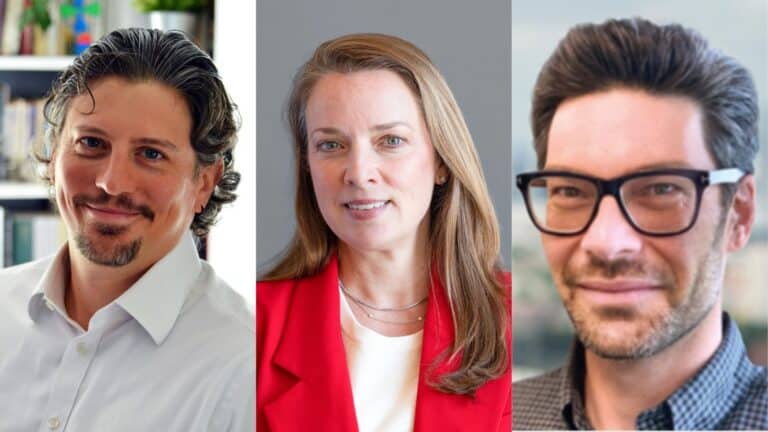
California has long led the nation in pioneering clean air regulations, from grappling with smog to setting ambitious zero-emission vehicle mandates. The Golden State's unique authority under the...
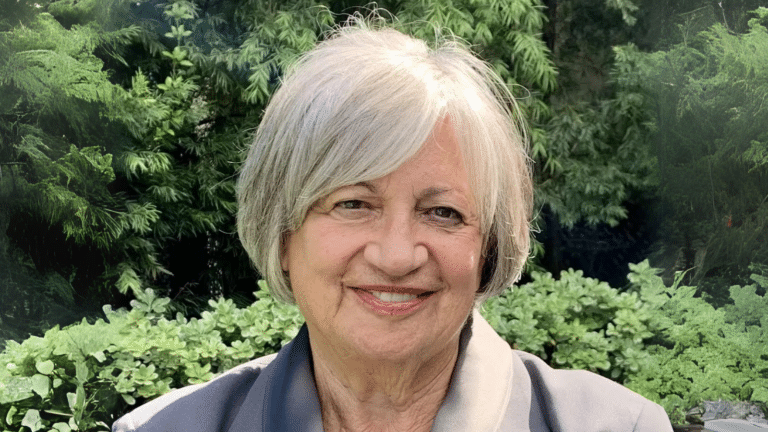
China’s dependence on the energy supplies that move through the Strait of Hormuz makes it especially vulnerable to any possible closure of the waterway by Iran in retaliation for attacks by Israel and the United States.
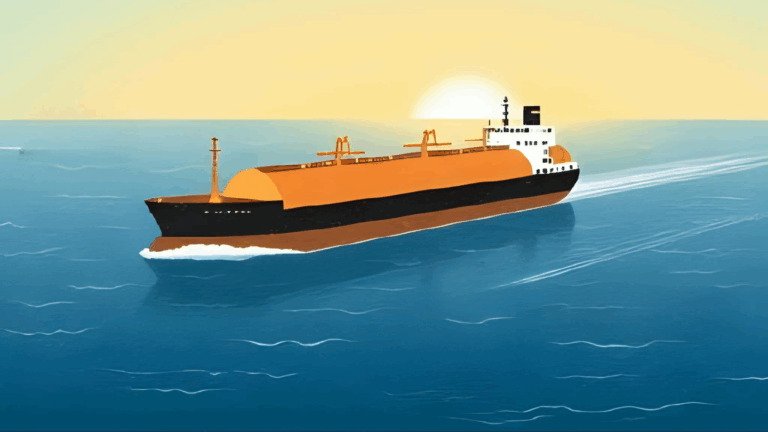
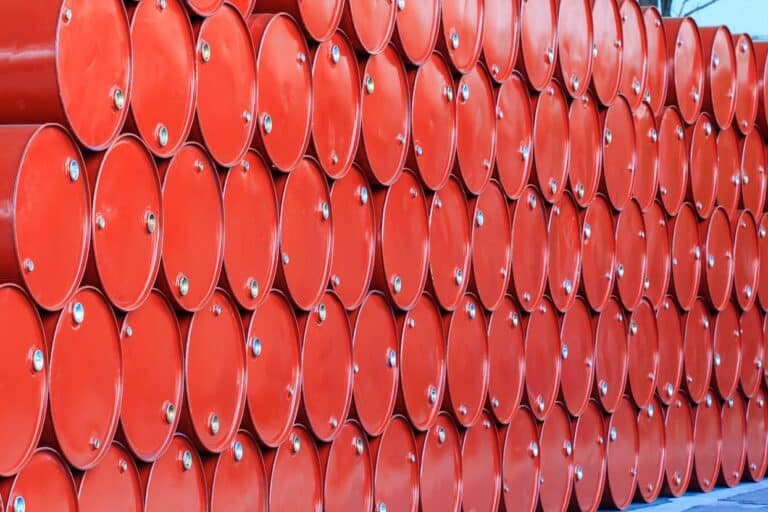
President Donald Trump has made energy a clear focus for his second term in the White House. Having campaigned on an “America First” platform that highlighted domestic fossil-fuel growth, the reversal of climate policies and clean energy incentives advanced by the Biden administration, and substantial tariffs on key US trading partners, he declared an “energy emergency” on his first day in office.

November’s election for president of the United States will have crucial implications for the nation’s and world’s energy and climate policies.
